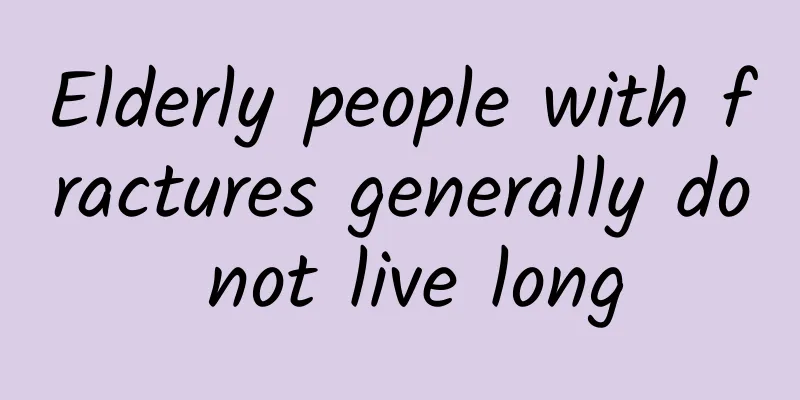Elderly people with fractures generally do not live long

|
A fractured bone does not necessarily mean a shorter life span for the elderly, but complications or worsening of physical condition may affect their quality of life and life span. A fracture itself is not terrible, the most important thing is to receive timely treatment and strengthen care to prevent complications and physical function decline. 1) Risk of fracture complications Elderly people are more likely to develop complications such as thrombosis, infection, and pneumonia after fractures, especially hip fractures and spinal fractures. This is because fractures lead to long-term bed rest, limited activity, and low immunity. To reduce the risk, restorative treatment should be carried out as soon as possible, such as avoiding long-term bed rest, preventing thrombosis through appropriate bed activities, and using anti-thrombotic drugs under the doctor's advice when necessary. Strengthening nutrition is also crucial to promote wound recovery and enhance immunity, such as supplementing protein, vitamin D, and calcium. 2) Accelerated deterioration of body functions Decreased mobility after a fracture can lead to muscle atrophy, further loss of bone density, and slower body metabolism. This can rapidly deteriorate the physical condition of the elderly, and even lead to a vicious cycle. To avoid such problems, rehabilitation training can help maintain mobility. Rehabilitation training includes lower limb strength exercises, balance training, and low-impact aerobic exercise (such as riding a stationary bike). Please remember to do it under the guidance of a professional medical team to avoid secondary injuries. 3) Influence of psychological state The psychological impact of fractures on the elderly also needs to be taken seriously. Long-term bed rest may lead to loneliness or depression, which indirectly affects disease recovery. Family companionship and psychological support are very important. Encourage the elderly to participate in daily activities, feel the warmth and care of the family, and seek help from a psychologist when necessary. 4) Challenges of Combined Chronic Diseases Elderly people often have other chronic diseases (such as diabetes and hypertension), which may make fracture recovery more complicated. For example, poor blood sugar control can delay wound healing, and hypertension may increase the risk of vascular disease. During the treatment of fractures, it is necessary to closely monitor the status of these chronic diseases and jointly develop a treatment plan with orthopedic surgeons and internists. In terms of medication, use it strictly according to the doctor's instructions to avoid interactions. After an elderly person has a fracture, their life span and health status are not entirely determined by the fracture itself. What is more important is treatment, care, and control of related risk factors. Caring for the elderly's physical and mental health and improving their quality of life are the keys to prolonging their life span. Family members bear important responsibilities in this process and should give full attention and support to the elderly. |
<<: Is cerebral vasospasm serious in children?
>>: Can I eat noodles after urinary stone crushing?
Recommend
Is pleurisy serious?
Pleurisy is an illness that can cause discomfort,...
What to eat to get rid of anal abscess quickly
If you have an perianal abscess, a reasonable die...
What is the best medicine to treat breast cysts?
Breast cysts are a relatively common benign disea...
Can I eat goose meat if I have breast hyperplasia?
Goose meat can be eaten in moderation, but you st...
What are the causes of postoperative complications of adrenal tumor surgery?
Adrenal tumor surgery sequelae may be caused by a...
What are the common methods for diagnosing gallstones?
Common methods for diagnosing gallstones include ...
Is breast hyperplasia in women a big deal?
Female breast hyperplasia is usually a benign dis...
Bright red blood in stool, no anal pain
Bright red blood in the stool and no anal pain ma...
What should I eat if my baby has ventricular septal defect in the sixth month of pregnancy?
Fetal ventricular septal defect in the sixth mont...
How to identify perianal abscess or external hemorrhoids
Perianal abscess and external hemorrhoids are two...
What medicine is good for breast cysts?
Breast cysts usually do not require medication. I...
What is the most effective way to treat gallstones?
The treatment of gallstones depends on the severi...
Ten herbs to fight hemorrhoids
Hemorrhoids, sounds a bit uncomfortable, right? I...
Does a breast cyst found during a physical examination require treatment?
Breast cysts don't usually require treatment,...
Can I still breastfeed if I have a breast cyst during lactation?
Generally, breastfeeding can be continued if a br...









